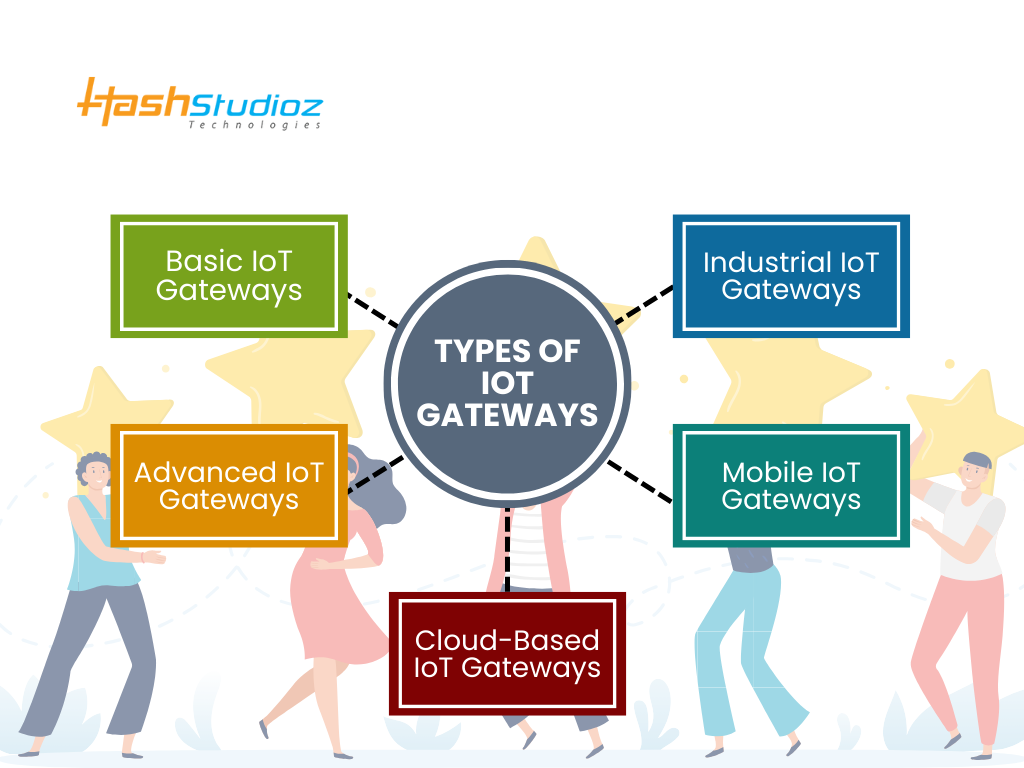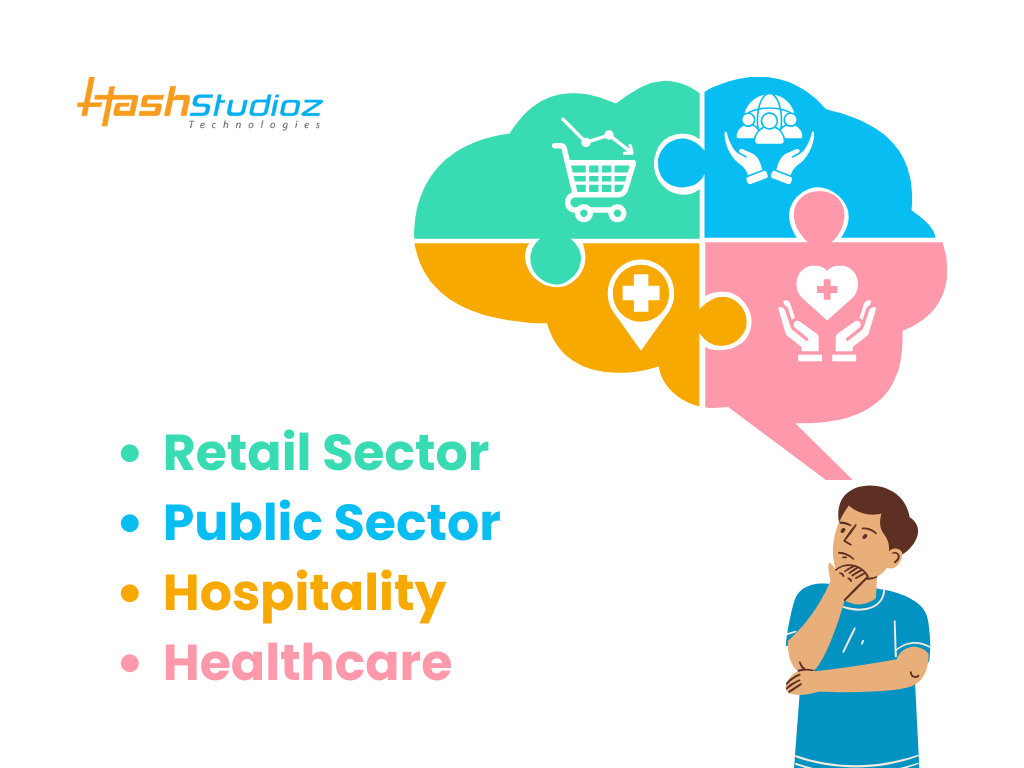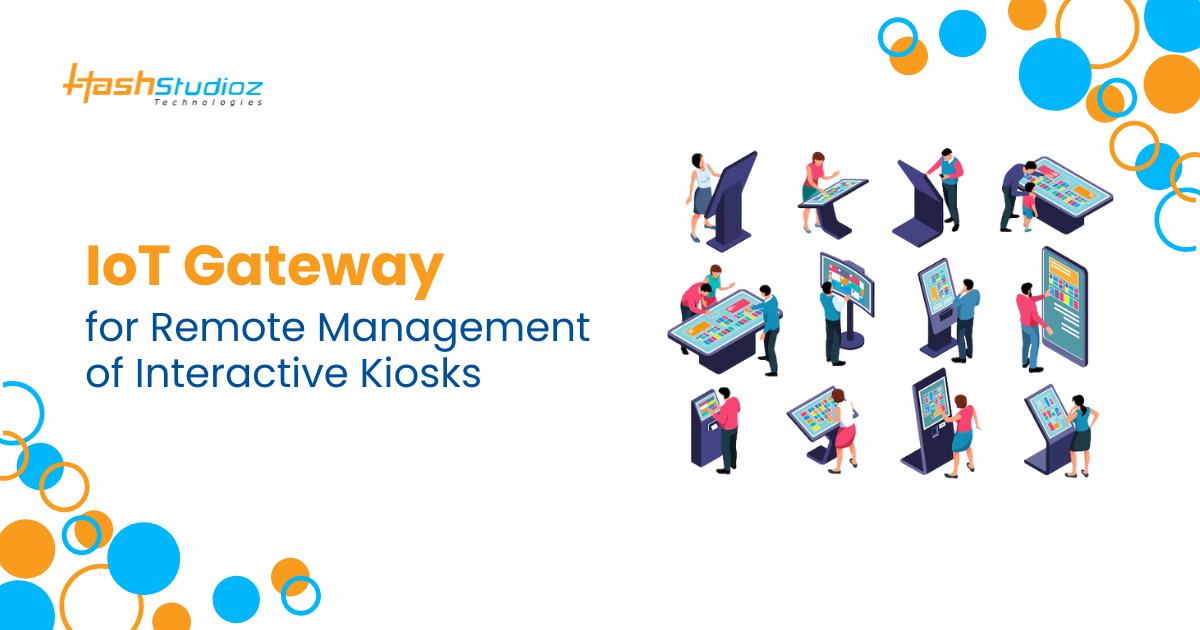Interactive kiosks have become an integral part of many industries, ranging from retail to healthcare, transportation, and public services. These self-service machines allow users to perform a variety of tasks like checking in at an airport, browsing product catalogs in stores, or accessing government services. Their widespread adoption is a direct result of their convenience, ability to improve customer engagement, and their potential to reduce human resource costs.
- The global IoT market for interactive kiosks is projected to grow at a CAGR of 22.8% from 2023 to 2030.
- Over 60% of businesses have implemented remote management solutions for kiosks, improving operational efficiency by 40%.
- Businesses using IoT gateways for kiosk management report a 25-30% reduction in operational costs, with a return on investment (ROI) within 18 months.
Table of Contents
- What is an IoT Gateway?
- The Role of IoT Gateways in Interactive Kiosks
- Key Benefits of Using IoT Gateways for Interactive Kiosk Management
- Challenges of Managing Interactive Kiosks Remotely
- How IoT Gateways Overcome Remote Management Challenges
- Technologies Powering IoT Gateways for Interactive Kiosks
- Implementing IoT Gateways in Kiosk Management
- Use Cases of IoT Gateway for Interactive Kiosk Management
- Why People Choose HashStudioz for IoT Gateways
- Conclusion
- FAQs
The Role of IoT in Remote Management
As interactive kiosks continue to expand, managing them has become increasingly complex, especially when they are deployed in large numbers across diverse locations. Traditional methods of management, which require on-site personnel to monitor and maintain these devices, are no longer practical. This is where Internet of Things (IoT) technology comes into play. IoT enables seamless communication and real-time data exchange between kiosks and a central management system, offering substantial benefits in terms of remote management, diagnostics, and control.
What is an IoT Gateway?
An IoT gateway acts as a bridge between IoT devices (such as interactive kiosks) and cloud platforms or central systems. It enables communication between sensors, devices, and servers by translating data from different protocols and formats, allowing for seamless integration and interaction.
Types of IoT Gateways
IoT gateways come in various types, each tailored to different needs based on the level of connectivity, data processing, and scalability required. Here are the key types of IoT gateways:

- Basic IoT Gateways:
- Purpose: Primarily focused on simple data transmission between devices and cloud servers.
- Key Features: Low cost, minimal processing power, simple protocol translation.
- Use Case: Ideal for small-scale deployments, such as connecting basic sensors or monitoring devices like temperature sensors.
- Advanced IoT Gateways:
- Purpose: Equipped with additional processing power, edge computing capabilities, and local data storage.
- Key Features: Higher processing capacity, local data storage, edge analytics.
- Use Case: Suitable for environments requiring faster data processing, like managing interactive kiosks across multiple locations.
- Industrial IoT Gateways:
- Purpose: Designed for large-scale industrial applications, offering robust security, scalability, and reliability.
- Key Features: Industrial-grade hardware, high security, real-time data processing, scalability.
- Use Case: Used in critical infrastructure or industrial operations, such as in factories, oil rigs, or large-scale logistics.
- Mobile IoT Gateways:
- Purpose: Mobile, portable gateways designed for use in vehicles or on the move, enabling connectivity in remote or mobile environments.
- Key Features: Mobility, real-time connectivity, rugged design for harsh environments.
- Use Case: Ideal for use in fleet management, logistics, and transportation systems, where devices and sensors need constant connectivity.
- Cloud-Based IoT Gateways:
- Purpose: IoT gateways hosted in the cloud, offering scalable and flexible connectivity and processing without the need for on-premise hardware.
- Key Features: Scalable resources, easy integration with cloud platforms, reduced maintenance.
- Use Case: Suitable for businesses that want to offload hardware management, such as in cloud-based smart home or smart city applications.
Why IoT Gateways Are Important for Remote Management
IoT gateways are essential for remote management because they provide a reliable and secure means of communication, allowing kiosk operators to monitor, control, and maintain devices remotely. They enable real-time monitoring, diagnostics, and even remote software updates, improving operational efficiency and minimizing downtime.
Interoperability in IoT Gateway Solutions: Bridging Zigbee, LoRaWAN, and Bluetooth
The Role of IoT Gateways in Interactive Kiosks
Interactive kiosks typically consist of hardware (touchscreen displays, card readers, cameras, etc.) and software (user interface, transaction processing, etc.). These kiosks collect and process data locally and can communicate with remote servers or cloud platforms for updates, maintenance, and other functions.
How IoT Gateways Facilitate Remote Management of Kiosks
1. Monitor Kiosk Performance: Track key metrics like uptime, transaction volume, and user interactions in real-time, optimizing efficiency.
2. Perform Remote Diagnostics: Quickly identify and troubleshoot kiosk issues remotely, reducing the need for on-site visits.
3. Push Software Updates: Automatically update kiosks with new software, patches, and features, ensuring devices are always up to date.
4. Manage User Access and Permissions: Remotely control user access and restrict unauthorized actions to enhance security.
5. Optimize Resource Usage: Monitor energy consumption and network usage to reduce costs and extend kiosk lifespan.
Key Benefits of Using IoT Gateways for Interactive Kiosk Management
1. Cost Efficiency
By leveraging IoT gateways for remote management, businesses can significantly reduce the cost associated with on-site maintenance, repair, and staffing. Real-time monitoring and diagnostics ensure that potential issues are addressed before they escalate into expensive problems.
2. Real-Time Data Collection
IoT gateways enable the continuous collection and analysis of data from interactive kiosks. This data can provide valuable insights into user behavior, kiosk usage patterns, and operational efficiency, which can be used to optimize kiosk performance and improve the user experience.
3. Remote Diagnostics and Maintenance
One of the major benefits of IoT gateways is the ability to perform diagnostics remotely. If a kiosk malfunctions or requires maintenance, operators can access diagnostic data through the IoT gateway and either fix the issue remotely or schedule an on-site repair.
4. Scalability
As a business expands and deploys more kiosks, IoT gateways make it easy to scale operations. New kiosks can be added to the network, monitored, and managed with minimal additional infrastructure or personnel.
5. Security Enhancements
Security is a critical concern for interactive kiosks, especially in public spaces. IoT gateways offer advanced security protocols, including encrypted communications, authentication mechanisms, and regular security updates to safeguard kiosks from cyber threats.
Challenges of Managing Interactive Kiosks Remotely
1. Connectivity Issues: Maintaining a reliable connection in remote areas or locations with unstable internet can be tough. IoT gateways support multiple protocols (Wi-Fi, 4G/5G, Ethernet) to ensure continuous operation even with disrupted connections.
2. Data Security Concerns: Kiosks handle sensitive data like payment information. While IoT gateways offer encrypted communication, proper implementation and regular updates are essential for network security.
3. Integration with Legacy Systems: Integrating modern IoT infrastructure with existing legacy systems can be complex and may require significant customization.
4. Scalability Challenges: As kiosk numbers grow, managing a large fleet remotely becomes more difficult. Scalable IoT solutions are needed to ensure efficient monitoring and management.
5. System Downtime and Maintenance: Ensuring minimal disruption during maintenance or updates is critical to keep kiosks operational and prevent downtime.
How IoT Gateways Overcome Remote Management Challenges
1. Seamless Communication: IoT gateways enable kiosks to communicate with central systems through various protocols (Wi-Fi, 4G/5G, Ethernet), resolving network compatibility issues and ensuring a smooth flow of data between devices.
2. Improved Security Measures: IoT gateways enhance security with encryption, secure authentication, and adherence to data privacy regulations, ensuring that sensitive data transmitted by kiosks remains protected.
3. Reliable Data Management and Analysis: By processing data at the edge (near the kiosk), IoT gateways reduce the volume of data sent to the cloud, minimizing bandwidth usage and improving overall system performance.
4. Network Resilience: IoT gateways are designed to handle network disruptions, automatically switching to backup connections or operating offline until the primary connection is restored. This ensures kiosks remain operational even in unstable environments.
5. Scalable Infrastructure: IoT gateways support scalable architectures, allowing businesses to easily manage an increasing number of kiosks without compromising performance or connectivity, making it ideal for large-scale deployments.
Bridging the Connectivity Gap in Construction with IoT Gateways
Technologies Powering IoT Gateways for Interactive Kiosks
1. Cloud Integration: IoT gateways enable kiosks to connect to cloud platforms for scalable data storage, remote monitoring, and real-time analytics, ensuring seamless updates and performance tracking across locations.
2. Edge Computing: By processing data locally, IoT gateways reduce latency and ensure quick responses to user interactions, even in low-connectivity environments.
3. Wireless Technologies (Wi-Fi, Bluetooth, Zigbee, etc.): Supporting various wireless protocols, IoT gateways enable kiosks to connect efficiently in diverse settings, even with challenging infrastructure.
4. 5G Connectivity: 5G technology offers high-speed, low-latency data transmission, ideal for high-traffic areas and applications requiring rapid responses, ensuring smooth and responsive kiosk operations.
5. Machine Learning and AI: IoT gateways use AI and ML to personalize user experiences, predict maintenance needs, and optimize system performance based on real-time data.Data Encryption and Security Protocols: Robust security measures like encryption and secure authentication protect sensitive data, ensuring kiosks comply with data privacy regulations.
6. Multi-Protocol Support: IoT gateways support multiple communication protocols, enabling seamless integration with various devices and cloud platforms, ensuring compatibility across different systems.
Implementing IoT Gateways in Kiosk Management
1. Device Selection and Configuration: Choose IoT gateways based on processing power, communication protocols, and security features. Proper configuration ensures seamless management and communication with kiosks.
2. Network and Connectivity Considerations: Select the right connectivity (wired or wireless) based on kiosk location. Redundant connections like Wi-Fi and cellular ensure reliable communication in remote or unstable areas.
3. Monitoring and Performance Optimization: Use IoT gateways to monitor kiosk performance, track uptime, and detect issues early to optimize operations and ensure efficient kiosk management.
4. Scalability and Future-Proofing: Ensure IoT gateways can handle future expansion, increased data, and new technologies for long-term scalability.
5. Security and Compliance Management: IoT gateways should offer encryption and secure authentication, complying with data regulations to protect sensitive information.
Use Cases of IoT Gateway for Interactive Kiosk Management

1. Retail Sector: Enhancing Customer Experience
IoT gateways can be used in retail environments to monitor self-checkout kiosks, provide real-time inventory updates, and ensure smooth payment processing. They can also help collect customer feedback through interactive screens.
2. Public Sector: Streamlining Government Services
In government buildings, kiosks can provide access to various services, such as paying bills or renewing documents. IoT gateways enable these kiosks to operate seamlessly, even remotely managing the distribution of documents or assisting users.
3. Hospitality: Improving Self-Service Solutions
In hotels, kiosks allow guests to check in, make payments, or request services. IoT gateways ensure these kiosks are operational 24/7 and provide critical data to hotel management for better customer service.
4. Healthcare: Managing Medical Information Kiosks
Interactive kiosks in healthcare facilities enable patients to check in, schedule appointments, and access health records. IoT gateways ensure these kiosks are secure, functional, and always updated.
Why People Choose HashStudioz for IoT Gateways
HashStudioz is a trusted provider of IoT gateway solutions, helping businesses optimize kiosk management and improve IoT infrastructure. Here’s why companies prefer HashStudioz for their IoT gateway needs:
1. Expert Customization: HashStudioz offers tailored IoT gateway solutions to meet the specific needs of your business, ensuring seamless integration with existing systems and platforms.
2. Robust Security: Their IoT gateways are equipped with advanced security features, such as encryption and secure authentication, to protect sensitive data.
3. Reliable Connectivity: HashStudioz ensures stable connectivity with multiple options (Wi-Fi, cellular, wired) to ensure uninterrupted communication, even in remote areas.
4. Real-Time Monitoring and Support: Their solutions come with advanced monitoring tools for performance tracking and diagnostics, along with 24/7 support to ensure smooth operations.
5. Scalable and Cost-Effective: HashStudioz provides scalable IoT gateway solutions that grow with your business, offering cost-effective solutions without compromising performance.

Conclusion
IoT gateways play a crucial role in the remote management of interactive kiosks. They provide businesses with the ability to monitor, maintain, and update kiosks in real-time, improving operational efficiency, reducing costs, and enhancing security. As interactive kiosks become more widespread across various industries, the need for robust IoT solutions will only continue to grow. By adopting IoT gateway technology, businesses can ensure their kiosks are functioning optimally, offering a better experience for customers and reducing downtime.
FAQs
1. What is an IoT gateway?
An IoT gateway is a device that connects IoT devices (like interactive kiosks) to central systems or cloud platforms, enabling communication and data exchange.
2. How does IoT help in kiosk management?
IoT enables remote monitoring, diagnostics, maintenance, and software updates for interactive kiosks, improving efficiency and reducing operational costs.
3. What are the security measures in place for kiosk IoT gateways?
IoT gateways typically use encryption, secure authentication, and regular security updates to protect kiosk data from cyber threats.
4. Can IoT gateways be used with legacy kiosk systems?
Yes, IoT gateways can be integrated with legacy systems through customization, enabling them to communicate with modern IoT infrastructure.
5. What are the key benefits of using IoT gateways for kiosk management?
Key benefits include cost efficiency, real-time data collection, remote diagnostics, scalability, and enhanced security.

